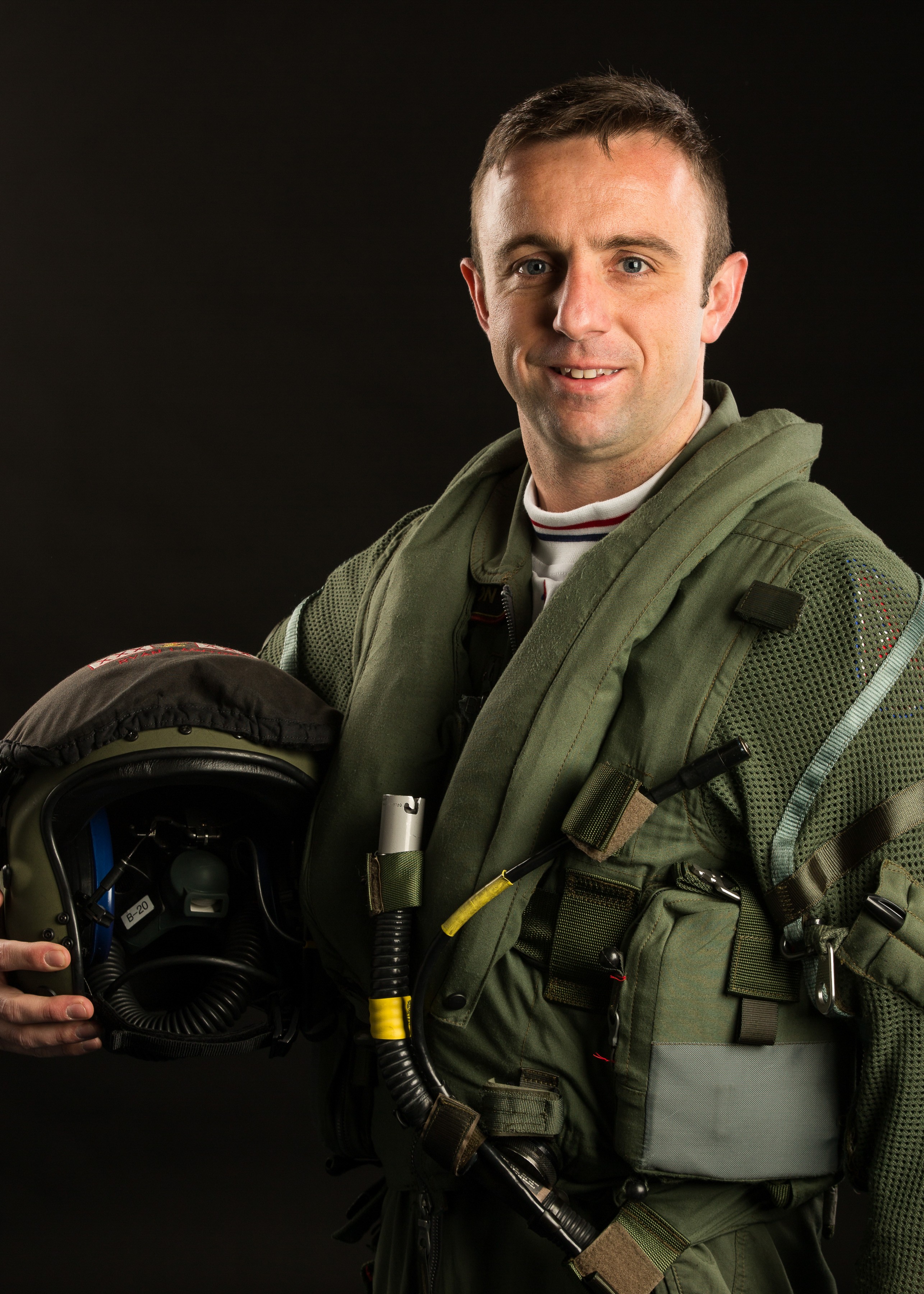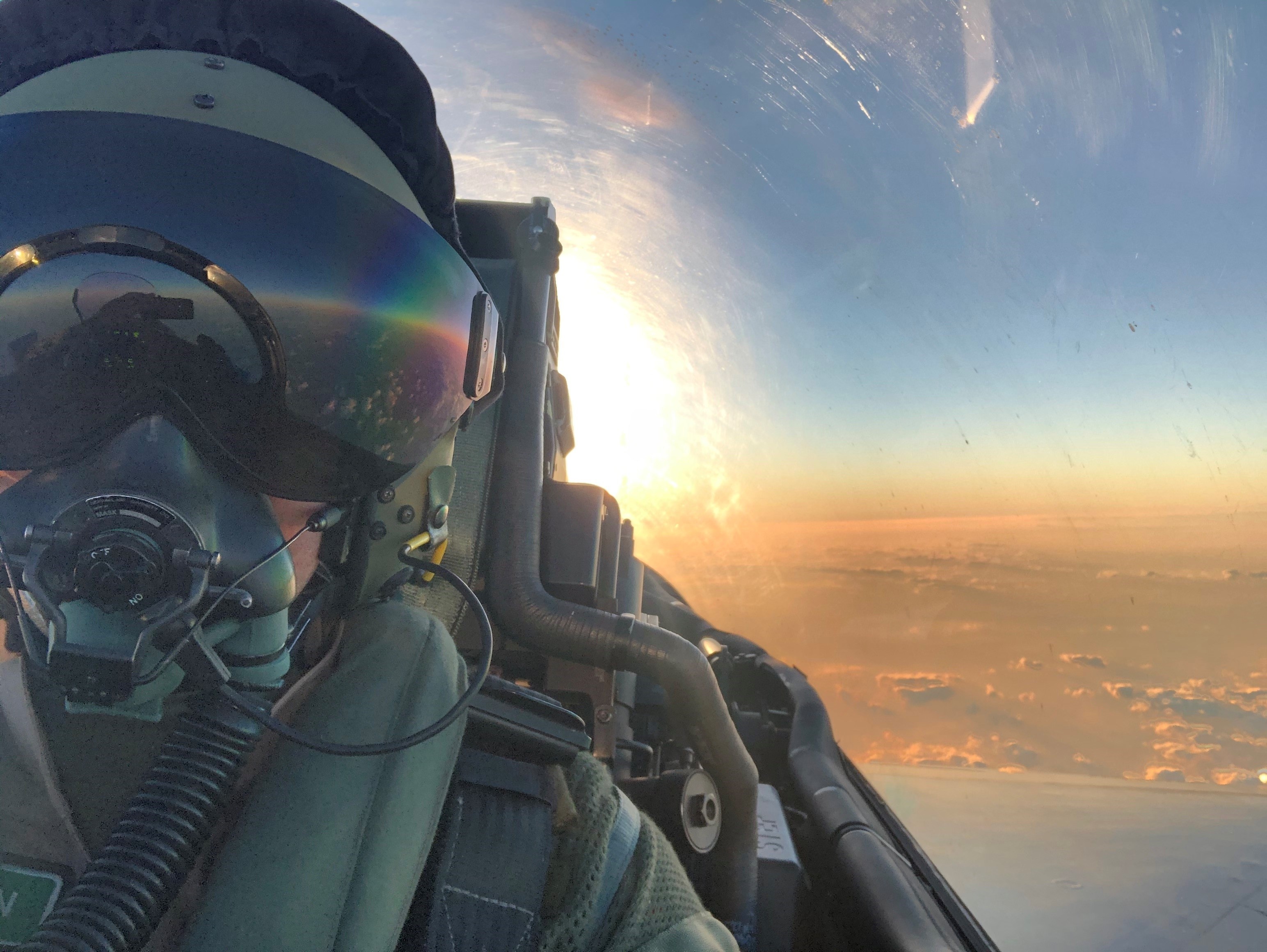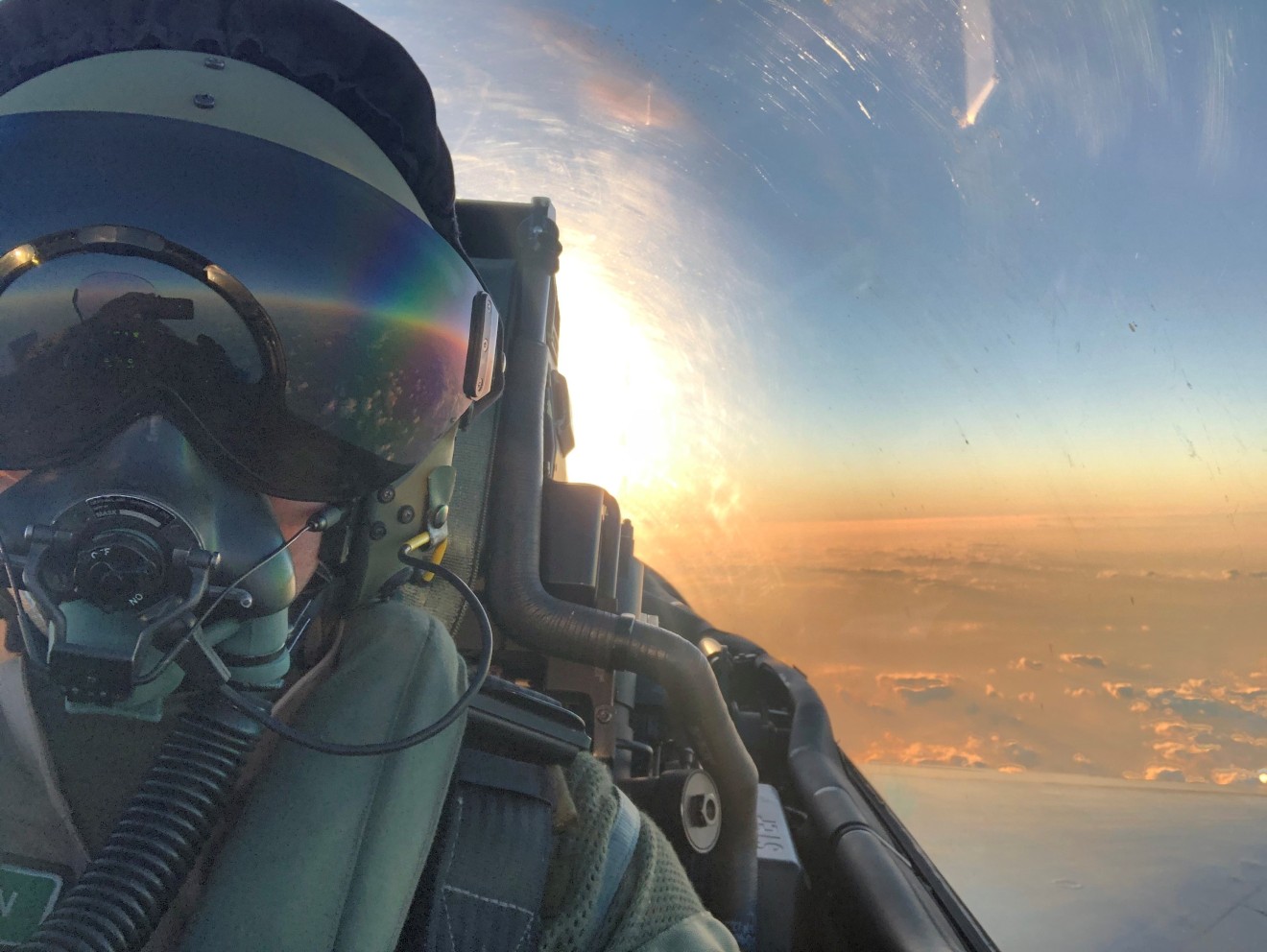
Did the original Top Gun movie inspire you?
Absolutely. I first recall watching it when I was about nine. That was my earliest exposure to flying fighter jets. It was definitely an inspiration and a big influence on what I wanted to do. I joined the air cadets a few years after watching it. I think I learnt something new about flying fighter jets every time I watched it — not that it was 100% accurate!
Of course, Hollywood films are made for entertainment rather than reality. How close do you think that original Top Gun film came to showing the real world and what were you expecting from the new one in terms of that kind of realism?
Ha! I was disappointed when I joined the Royal Air Force because I was expecting to play a lot of beach volleyball!
To be fair, the film does a really good job of capturing the camaraderie of a fighter squadron. The sort of interaction with your colleagues — the trust you need to have when you're conducting dynamic air combat manoeuvres and ultimately when you are on operations with them. In that regard, they hit the nail on the head.
When it comes to the actual flying, well it's a Hollywood movie so, no, it's not entirely accurate. Ultimately it looks like a lot of fun and that’s what inspired me and many others to pursue a career in aviation.
What are the skills you need?
In the 1980s Top Gun era, having good hand-eye coordination, being able to react and having good responses, was quite important. However, modern aircraft like Typhoon are relatively easy to fly. When we train pilots now it's rare that they have an issue handling the aircraft. Typhoon is designed to have carefree handling, meaning you can't stall or mishandle it, which allows the pilot to concentrate on other key tasks in the cockpit.
In the BAE Systems training team, we do a lot of work in the simulators with pilots to hone their skills in handling and prioritising tasks.
To be a fighter pilot you need to have lots of mental capacity and the ability to prioritise tasks when there's a lot of information coming into the cockpit. It's making sure that blend of being able to fly while at the same time operating the radios, working with the sensors, and dealing with all the other inputs that come your way — that’s the biggest skill you need to be a modern fighter pilot.

What is the training like – do many people fall by the wayside?
I remember when I first joined up being told that for every pilot that reaches a front-line fighter squadron, there were 40,000 other people that at some point were interested in that job. So, yes, it's quite a tough initial selection process.
By the time students reach us in the Typhoon Conversion Unit they have been through a rigorous streaming process. These days the success rate for the Royal Air Force is a lot higher than it used to be. That’s partly down to selecting the right people in the first instance.
In my role as a BAE Systems Simulator Instructor, we deliver high-fidelity training to pilots with technology that enables us to run a variety of different scenarios. Not only do the simulators give us numerous training options they are also more environmentally friendly and save tonnes of CO2.
Do you think the new Top Gun film will spark renewed interest in this is as a career option?
Yes, I hope so. The US Navy saw a huge spike in their recruitment when the first film came out in the eighties. It will be fascinating to see the public's reaction and I’ll be interested to see if young boys and girls walk into a Careers Office and say they want a job like they’ve seen at the movies.
It is a great opportunity to inspire and engage people in thinking about a career in defence, whether that is in industry or the military.
Top Gun was definitely an inspiration and a big influence on what I wanted to do.
Do all fighter pilots have cool nicknames like Maverick?
I hate to disappoint people, but the RAF doesn't really buy into that. We're usually quite boring with our naming traditions. It’s generally just an abbreviation of your surname or your first name. The call-sign tradition is an American one. In the US, when you graduate from your flying training course you have your naming ceremony, and you are awarded your nickname that's sticks with you for life.
Will you be watching the new film?
Absolutely. In fact, my previous squadron has booked out the entire cinema for everyone on the squadron and I’ll be joining them. There are a lot of different groups of people that I am looking forward to watching the film with. There are the friends that I've grown up with — we used to watch it together as kids, then my own children who are 13 and 9 and they are both keen to see it. And obviously there are work colleagues old and new, who will be fascinated to see how they’ve updated the film.
